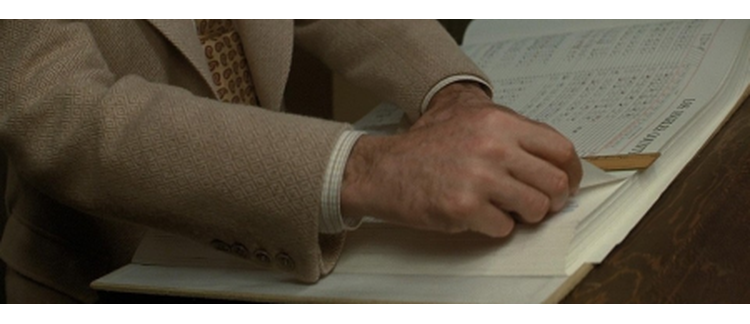Creator's Statement
The ABCs of Forms & Genres
A few months back, at the Facebook page for the Audiovisualcy group, [in]Transition co-editor Catherine Grant invited her fellow members to join in a game, doing the rounds at that point, wherein people were asked to provide a list of their ten favorite films beginning with a single letter of the alphabet. Though this might seem little more than a virtual parlour game, we should remember that, at least since the 1950s, ten best lists have been a key form of cinephiliac expression. Though ten best lists pre-date this golden age of cinephilia, Sight & Sound’s every decade top ten poll, first held in 1952, and Cahiers du Cinéma’s monthly “Le Conseil des dix,” initiated in 1955, were crucial in both establishing and upsetting canons of taste and value. The formal parameter of titles that begin with a single, randomly assigned letter of the alphabet further radicalizes the fun, loosely linking this practice to the Exquisite Corpse and other Surrealist games. As participants play along, they not only lend their voices to the chorus of canon-makers and -upsetters, but in doing so they also offer a kind of cinephile self-portrait.
Catherine took both these aspects of the game a step farther: instead of asking her cinephile friends at Audiovisualcy simply to make a list, she asked them to produce short videos consisting of clips from the films on their list. With this, the game took on a new richness. For in the best of these ABC Top Ten videos, the participant is not simply offering a list, he or she is making an aesthetic object – one in which selected films are represented not by their titles, but by a carefully orchestrated handful of the images and sounds from their whole. This making of an object extends the link to Surrealism. As Robert B. Ray has noted, Walter Benjamin recognized “Surrealism’s common ground with film: the propensity for fragmentation and discontinuity, the reliance on recombination and juxtaposition” (41) – features these ABC videos readily exploit.
Working with (and reworking) existing cinematic images and sounds in this way evokes an important pre-history of contemporary videographic practice: not the essay film (which is one source, to be sure), but gallery installation art that takes the cinematic experience as its subject – works like Douglas Gordon's 24 Hour Psycho (1993), Christian Marclay's The Clock (2010), and many others described by Catherine Fowler as evocatively engaging with the “elsewhere” of cinema. Fowler writes, “The look backward of the gallery films that reenact and remake goes beyond the visible image track of cinema’s past because it is formed collectively from both the ‘there’ of cinema, or the real screened images, and what artist Pierre Huyghe ingeniously calls the ‘elsewhere,’ or the reactions to, feelings from, and desire for, remembered films: ‘In a narrative, whatever is not present (there), whatever refers to another time or another space (over there), is connected to the memory of the person receiving it, to a previous real existence. In this way, its reception is a subjective experience of producing meaning. By momentarily inhabiting this elsewhere, by mentally reconstructing this intervening moment, the viewer actively occupies his or her time and becomes the co-author of the narrative’.” Videographic essay producers similarly use parts of other works to construct their own object – one clearly related to, but also partly independent of, those sources – that stands as a concrete manifestation of both the ‘there’ and ‘elsewhere’ of cinema.
What is also striking in the case of the ABC videos is the way in which some makers – such as the ones I feature here – set about coordinating their images and sounds into a coherent and effective (and affecting) object by imposing their own additional parameters. In “10 x M,” Rob Stone uses Woody Allen’s opening monologue from Manhattan (1979) as a way to begin selecting and organizing his material. But once that parameter has exhausted itself as a mode of organization, he introduces another. This imposition of formal parameters in the process of videographic work can be seen across a number of what might be identified as minor genres of the videographic essay, several of which are highlighted by this issue's other curators. Girish Shambu focuses on one particularly rich example of the multi-screen video, a form that typically juxtaposes two or more sequences (from the same film or several) within the same frame. Chiara Grizzaffi highlights the features of the tribute video in three stellar examples. And Corey Creekmur considers the compilation or found-footage video (a category that includes virtually all the videos curated in this issue) and explores its link to previous work in documentary and avant-garde film traditions.
Works Cited
• Fowler, Catherine. “Remembering Cinema ‘Elsewhere’: From Retrospection to Introspection in the Gallery Film,” Cinema Journal Vol. 51, No. 2 (Winter 2012): 26-45.
• Ray, Robert B. The Avant-Garde Finds Andy Hardy (Cambridge: Harvard University Press, 1995).
